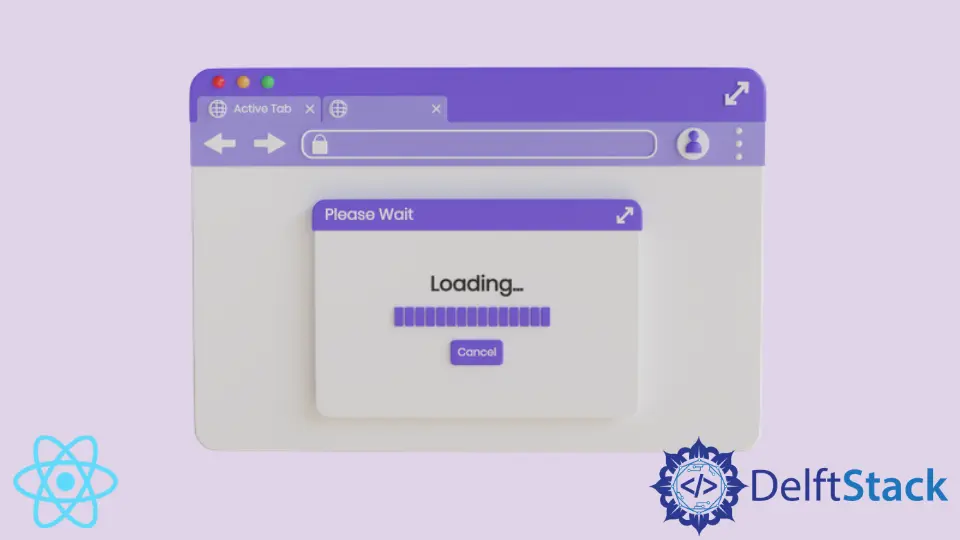How to Load Animated GIF in React
- Method 1: Importing GIFs Directly
- Method 2: Using URLs for External GIFs
- Method 3: CSS Background Images with GIFs
- Conclusion
- FAQ

In the world of web development, incorporating animated GIFs can significantly enhance the user experience. They add a dynamic touch to your application, making it more engaging and visually appealing. If you’re working with React, you might be wondering how to effectively load and display GIFs within your components.
This article will guide you through various methods to include animated GIFs in your React applications, ensuring that your implementation is both efficient and straightforward. Whether you’re a beginner or an experienced developer, you’ll find practical tips and code examples to help you seamlessly integrate GIFs into your projects.
Method 1: Importing GIFs Directly
One of the simplest ways to load an animated GIF in a React application is by importing it directly into your component. This method works well for local GIF files stored in your project directory. Here’s how you can do it:
import React from 'react';
import myGif from './path/to/your.gif';
const GifComponent = () => {
return (
<div>
<img src={myGif} alt="Animated GIF" />
</div>
);
};
export default GifComponent;
When you import a GIF file like this, Webpack (or your chosen bundler) will handle the file, allowing you to use it in your component. The src attribute of the img tag points to the imported GIF, and the alt attribute provides a description for accessibility.
This method is particularly useful for small GIFs or when you want to keep your assets within the project. However, be mindful of the file size, as large GIFs can slow down your application’s loading time. For optimal performance, consider using optimized GIFs or converting them into a more efficient format like WebP.
Method 2: Using URLs for External GIFs
If you’re looking to use GIFs hosted externally, you can simply reference their URLs in your React component. This method is straightforward and ideal for larger GIFs or when you want to avoid bloating your project with media files. Here’s how to do it:
import React from 'react';
const GifComponent = () => {
return (
<div>
<img src="https://example.com/your-animated.gif" alt="Animated GIF" />
</div>
);
};
export default GifComponent;
In this example, the src attribute directly points to the URL of the GIF. This approach allows you to load GIFs from various sources, such as Giphy or Tenor, without needing to store them in your project.
While this method is convenient, ensure that the external source is reliable to avoid broken links. Additionally, consider the loading time, as GIFs hosted on slower servers may impact the user experience. Using a CDN can help mitigate these issues by providing faster access to your media files.
Method 3: CSS Background Images with GIFs
Another effective way to incorporate animated GIFs in React is by using them as CSS background images. This method allows for more control over the styling and positioning of the GIF, making it a versatile choice for developers. Here’s an example:
import React from 'react';
import './GifComponent.css';
const GifComponent = () => {
return (
<div className="gif-background">
<h1>Welcome to My Site!</h1>
</div>
);
};
export default GifComponent;
In your CSS file (GifComponent.css), you can set the GIF as a background image:
.gif-background {
background-image: url('./path/to/your.gif');
height: 400px;
width: 100%;
background-size: cover;
background-repeat: no-repeat;
display: flex;
justify-content: center;
align-items: center;
color: white;
}
By using CSS, you can easily adjust the size, position, and other styles of the GIF. This method is particularly useful for creating visually immersive sections in your application.
Using GIFs as backgrounds can create a more engaging experience, but be cautious about readability. Ensure that any text or other elements overlaying the GIF remain legible. Additionally, consider the performance implications of using large background images, as they can slow down your site if not optimized.
Conclusion
Incorporating animated GIFs into your React applications can significantly enhance user engagement and visual appeal. Whether you choose to import GIFs directly, use URLs for external sources, or set them as background images, each method has its unique advantages. By following the techniques outlined in this article, you can effectively load and display GIFs, ensuring a dynamic and enjoyable user experience. Remember to keep performance in mind and optimize your GIFs to prevent any slowdown in your application. Happy coding!
FAQ
-
How do I optimize GIFs for better performance?
You can optimize GIFs using tools like GIPHY’s GIF optimizer or online services that reduce file size without compromising quality. -
Can I use GIFs in React Native applications?
Yes, you can use GIFs in React Native by utilizing theImagecomponent and providing the source as a URI or local file. -
What are some alternatives to GIFs for animations in React?
Consider using CSS animations, SVGs, or libraries like Lottie for more efficient and scalable animations. -
How do I handle loading states while GIFs are loading?
You can use a state variable in your component to show a loading spinner or placeholder until the GIF is fully loaded. -
Is it possible to control GIF playback in React?
No, standard GIFs play on a loop automatically. However, you can use video formats or libraries that allow for more control over playback.
Irakli is a writer who loves computers and helping people solve their technical problems. He lives in Georgia and enjoys spending time with animals.
LinkedIn